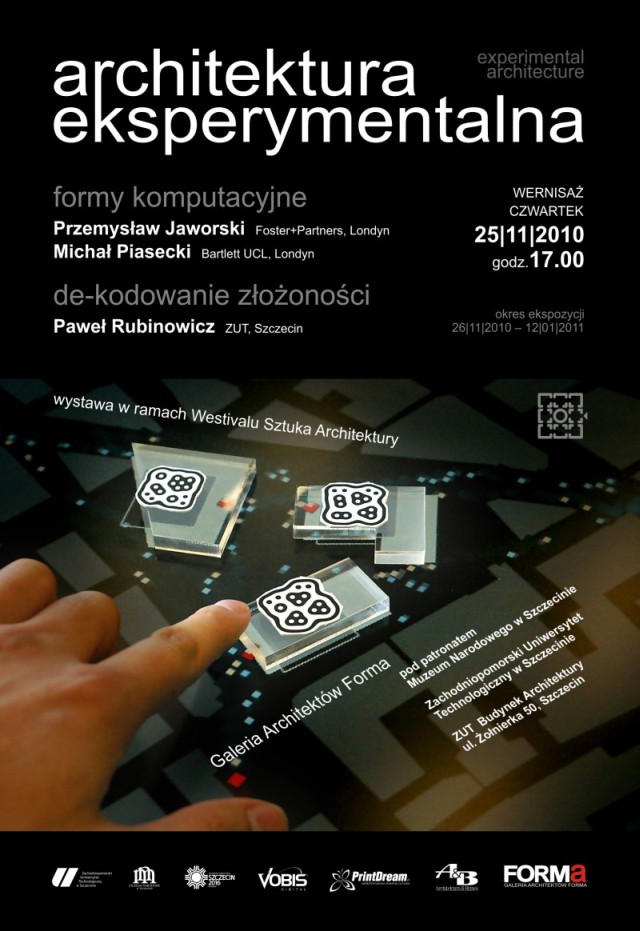Przemek Jaworski was involved in
dise?o paramétrico + fabricación digital : 2010 parametric design + digital fabrication 2010
hosted in Malaga on 30th of October 2010. Event was organized by University of Malaga and Lem3a studio (run by Rafael Urquiza), and consisted of 4 days workshop and 2 day conference. Videos can be viewed here:
http://master.lem3a.es/conferencias/dp+fd_2010/videos-es.php
Main website link : http://dpfd2010.lem3a.es/
Szczecin video :
Finally, a video summarizing Szczecin’s Compuational Forms exhibition is available for viewing below :
Przemek Jaworski was involved in
dise?o paramétrico + fabricación digital : 2010 parametric design + digital fabrication 2010
hosted in Malaga on 30th of October 2010. Event was organized by University of Malaga and Lem3a studio (run by Rafael Urquiza), and consisted of 4 days workshop and 2 day conference. Videos can be viewed here:
http://master.lem3a.es/conferencias/dp+fd_2010/videos-es.php
Main website link : http://dpfd2010.lem3a.es/
Szczecin video :
Finally, a video summarizing Szczecin’s Compuational Forms exhibition is available for viewing below :


